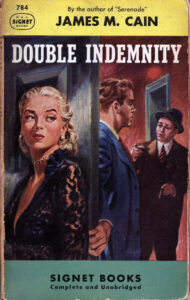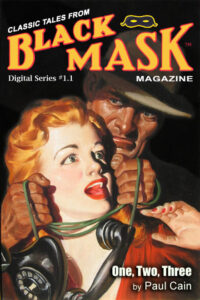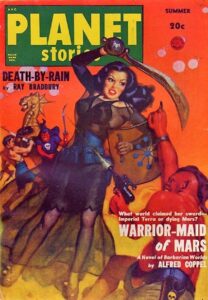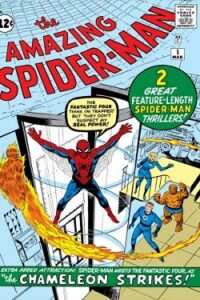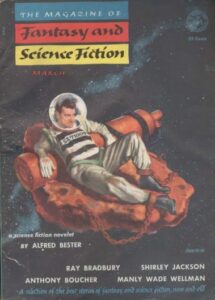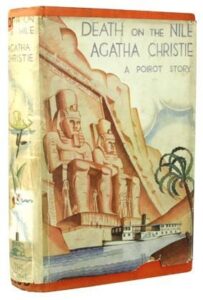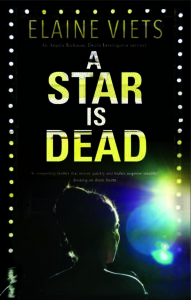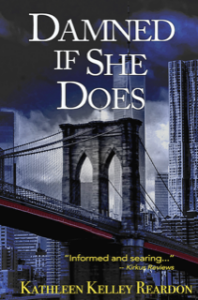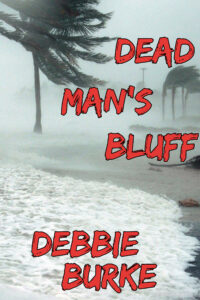My last piece on The Kill Zone was about a day in the life of a detective. I was a criminal investigator for Canada’s national police force, the RCMP, and retired after 20 years of service with the Serious Crimes Section. We mostly concentrated on murder files, so I had a bit of contact with cadavers.
I left the detective business to take an appointment as a coroner. That gave me another investigation career as the guy no one wants an appointment with—Doctor Death. It was a smooth and fitting transition. I have to say I enjoyed the challenge.
People often wonder about the difference between a coroner and a medical examiner (ME). Simple, I say. It’s a lot cheaper to hire a fee-for-service coroner to do life’s dirty work than employing a full-time physician or pathologist.
The two death investigation systems, MEs and coroners, are used all across the civilized world. It depends on the region and the history as to what form the death investigation office holds. Coroners originated in Jolly Old England where the “Crowner” was appointed by the King or Queen to make sure no monkey business happened with royal subject bodies before due death taxes were collected.
Moving forward to the twentieth and twenty-first centuries, the coroner service served its purpose in smaller areas with low-volume death loads. It was usually a good ole’ boy in the community who got the coroner nod, and he was trusted to be fair and impartial when ruling on death causes. It didn’t always turn out that way.
 As medical and forensic processes evolved, so did the need for specialized skills and knowledge. Look at it this way. The medical examiner is a highly-trained professional who employs field investigators and in-house technicians. It’s ideal for big city areas because of body counts. Coroners were appointed as fee-for-service retainees on a case-by-case basis in low-volume sites.
As medical and forensic processes evolved, so did the need for specialized skills and knowledge. Look at it this way. The medical examiner is a highly-trained professional who employs field investigators and in-house technicians. It’s ideal for big city areas because of body counts. Coroners were appointed as fee-for-service retainees on a case-by-case basis in low-volume sites.
It’s much more economical to pay a coroner $80K per year to do death investigations and write rulings than it is to keep a forensic pathologist on staff at $200K-plus. Then, there are employee expenses where medical examiners keep payroll workers with overheads whereas a coroner sub-contacts undertakings like autopsies and toxicology examinations. Coroners pretty much go it alone.
It’s all about money. I can’t say one system is necessarily better than the other. We used a coroner service where I worked near Vancouver, British Columbia. You might note the term “British” as this place was settled by the Brits who evoked their coroner system. If it ain’t broke, don’t fix it, so it stayed.
Before getting on with what a coroner does in a typical day, let me tell you how I snagged a coroner appointment. You don’t apply to become a coroner and there’s never a job posting. It’s a secret society. Masons. Skull & Bones. Illuminati.
You’re carefully scrutinized, then cautiously invited into the service because you have something valuable to offer and no skeletons in the closet. That’s either investigation experience or medical knowledge. It’s no coincidence the vast majority of coroners I worked with were cops and nurses who took early retirement to double-dip pensions. I had no problem with that.
It sounds like an old boys club situation, right? Well, in my case it was the old girls who took a chance on me. I knew Rose when I was a cop and she was a field coroner. She moved up the ladder to be the boss and it seemed she thought I was a good fit.
The other good ole’ girl was Barb. She was a rare bird who didn’t come from the usual suspects. Barb was a high-profile, investigative crime reporter. I was her snitch, er, ah, contact inside the police department. We were also good friends and, when Barb got settled into a coroner appointment, she vouched for me.
Coroners in Canada get judicial appointments—we’re not elected. And, there’s immense power in a coroner’s hands. We’re essentially independent Supreme Court Judges whose rulings on death cases stand, except for a very tough appeal process through the federal justice minister. As coroners, we signed our own warrants like being able to search any place at any time or go out and exhume the dead.
Okay. That’s the deal of how I got the job. For this piece, I looked in my journals to find a typical day where interesting stuff went down. Many days in a coroner’s life are routine but this Tuesday in June certainly was not. It was the day we autopsied Mister Red Pepper Paste Man.
It started the day before. I got a field call of a sudden death in an apartment block. The cops were the first on the scene, and they didn’t have any valid foul play concerns, but the place was a slight mess with things knocked about. They also told me the neighbors reported a short screaming fit coming from the dead man’s apartment which they said sounded like someone skinning a live cat.
In death investigations, we focused on a triangle of information. One was the body and what its condition told us. Next were the scene and the general or specific details. Third was the medical history of the deceased. In other words, was this a medical time bomb waiting to explode?
That didn’t seem to be the case with Mister Red Pepper Paste Man. Here was this skinny old guy lying on the floor in the fetal position. He was in the kitchen, and it was relatively tidy except for a few items like an overturned chair, some dishes on the floor and some partially-eaten food.
The first thing I looked for was his meds. Time bombs usually have a pharmacy stored somewhere. That wasn’t the case with Mister Red Pepper Paste Man. I couldn’t find a thing—certainly nothing to identify a family doctor who could say he was long past his best-before date.
Then, there was the neighbor information that indicated he’d gone into some sort of painful distress. Myocardial infarctions and brain aneurysms will do that, so I suspected a jammer or a cerebral bleed. I bagged Mister Red Pepper Paste Man and hauled him back to the morgue.
That was Monday. There was a vacant postmortem spot for first thing Tuesday morning. I got there early and had a chat with my pathologist friend, Elvira. I told her about the scene and commotion. She just shrugged and said, “Let’s see”.
Elvira and the diener, or morgue attendant/autopsy technician, did the usual incisions and ruled out the heart and brain. Then she opened the stomach. “Whoa! Look at this!”
Even Elvira stepped back. The stomach contents were alive. They were positively moving in a mass of reddish pasty mess.
“Go back to the scene,” Elvira instructed. “Look for anything he’d been eating and bring it to me.”
I left Elvira and the diener to sew-up the man and put him back in a drawer. The apartment wasn’t far from the morgue so I was back there in about ten minutes. I saw right away what I hadn’t noticed before. There, on the kitchen counter, was an open jar of red pepper paste. There was also a knife, a toaster and a part-eaten sandwich.
I looked in the jar. It, too, was alive with a pathogen culture. Like, it was squirming as if trying to leave. With double gloves, I put the nearby cap on, put the bio-hazard in a container and took it back to Elvira.
“I thought so.” Elvira also double-gloved. She wore a Hazmat-rated respirator as she cultured a slide and put it under the microscope. “Botulism.” Then she looked at me and kind of smiled. “You know they make Botox out of this shit, don’t you?”
That was the story about Mister Red Pepper Paste Man, and he must have had an excruciatingly painful death. Another file I had going was this strange series of disarticulated feet stuffed inside running shoes that sporadically washed up onshore. Our city across from Vancouver was the center of Pacific tidal waters that merged the huge Fraser River drainage with the saltwater basin that extends through Puget Sound to Seattle. Around us was a breakwater of islands, small and large.
For the last three years, there was something strange in the neighborhood. These stupid severed human feet in runners kept popping up, and it created quite the stir. Major media outlets loved the story. They speculated anything from a serial killer with a foot-fetish to a weirder-than-normal satanic cult was behind it.
We, in the coroner service, liked to rely on science more than sorcery. It was Barb who first thought these floaters were from suicide bridge jumpers in the Fraser Valley. Barb theorized the jumpers would go into the cold Fraser freshwater and sink, then get dragged along the bottom out to the warmer seawater. Here, nature’s decomposition action, along with marine life caused the ankles to disarticulate and the foot-encased shoes would bob to the surface.
But why did this start happening now? We never heard of this before. Barb loved jigsaw puzzles. She always had one on the go in her office, and I think she saw the floating feet like a puzzle. She sniffed and she snooped and she solved the mystery.
Barb found it was simply a chemistry advancement compounded with economics. One thing all the shoes had in common—thirteen feet in total—was they were Chinese knockoffs sold in discount stores. To save production and shipping costs, the shoe manufacturers switched to a high-tech, lightweight polypropylene sole that floated like cork. The files remained open while we tried to make DNA matches to missing people.
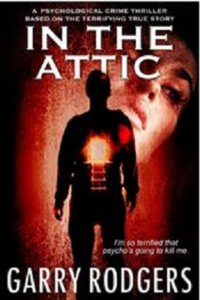
In The Attic – A Psychological Thriller Based on a True Crime Story – is available PERMAFREE on Amazon
My cell toned. It was a cop from one of the Gulf Islands which ringed our area like a fence. He said they had a death to report, but he didn’t know the cause. He was following protocol as all sudden and unexplained deaths, by law, had to be reported to the coroner.
“Any sign of foul play or accident?” I immediately asked this to qualify if I should attend the scene. This island was a half-hour ferry ride each way and attending unnecessarily would take a chunk of what was left in the day. I’d only go that distance if there could be trouble down the road like criminal charges, lawsuits or a public inquest.
“Nope,” he replied.
“What’s the circumstances?” That was always my nest question.
“Looks natural to me.” The officer had no concerns. “It’s an elderly lady discovered dead in bed. Found by her daughter who said they’d long expected it. Her prescriptions cover the usual for the aged.”
“Have you got the family doc’s name and number?” I knew this was shaping up to be a Coroners Act Section 15 case where I had no jurisdiction in a natural death—only in homicide, accident and suicide. Here, the family doctor was responsible for determining the medical cause of death (MCD) and sign the death certificate (DC).
I copied the info, then asked the officer to take some scene photos and email them to me. “If there’s nothing weird,” I said, “like a screwdriver in the back, then you’re okay to remove the body.” Legally, no one can touch a dead body without a coroner’s approval.
I called the doctor and had her sign off. There was nothing weird in that case, and there’s nothing weird in most cases. Except for this one.
I had an open file waiting for toxicology results. It wasn’t the cause of death I questioned. That was obvious. It was what drove someone to commit such a horrific act of suicide.
I never saw anything like it. Not in my detective days. And, not in my days as a coroner.
I attended a death scene like no other. A sixty-six-year-old grandmother with no known history of mental or other illness—certainly not suicidal tendencies—had phoned her daughter to come and pick her up to go shopping. The daughter arrived with the eight-year-old granddaughter and couldn’t immediately find the senior. They walked about the house and heard a buzzing sound coming from behind a closed bathroom door. So, they opened it to find the mother/grandmother had slit her own throat from ear-to-ear with an electric carving knife. The tool was still running and spattering blood.
There was no way this was a homicide set-up although we investigated it as a crime scene. We found the senior was self-diagnosing and medicating on the internet. She’d ordered and taken gabapentin which is a veterinary anti-seizure medication. Once the tox report came back with the blood concentration, I’d be in a better position to determine if the consumption amount caused a psychotic episode.
I spent the day’s remainder writing two Section 16 judgements. Those were in my jurisdictional wheelhouse. One was a motor vehicle accident death, and I knew the family wasn’t going to like my finding. The other report was for an in-house complications-of-surgery case which had malpractice lawsuit written all over it.
It was four-thirty. I finished the drafts and closed my laptop. I left my little office that I squatted in at the morgue and went home. My wife was there—our kids were grown and gone—and she played Words With Friends on her iPad.
I joined her in a pre-dinner glass of wine. White. Not red. Normally, I’d have a few fingers of Scotch over frozen rocks. But, I was on-call, after all, and no one wants their dead body examined by a half-cut coroner.
* * *
 Garry Rodgers has lived the life he writes about. Garry is a retired homicide detective and forensic coroner who also served as a sniper on British SAS-trained Emergency Response Teams. Today, he’s an investigative crime writer and successful author with a popular blog at DyingWords.net as well as the HuffPost.
Garry Rodgers has lived the life he writes about. Garry is a retired homicide detective and forensic coroner who also served as a sniper on British SAS-trained Emergency Response Teams. Today, he’s an investigative crime writer and successful author with a popular blog at DyingWords.net as well as the HuffPost.
Garry Rodgers lives on Vancouver Island in British Columbia at Canada’s west coast where he spends his off-time around the Pacific saltwater. Connect with Garry on Twitter and Facebook and sign up for his biweekly blog.

